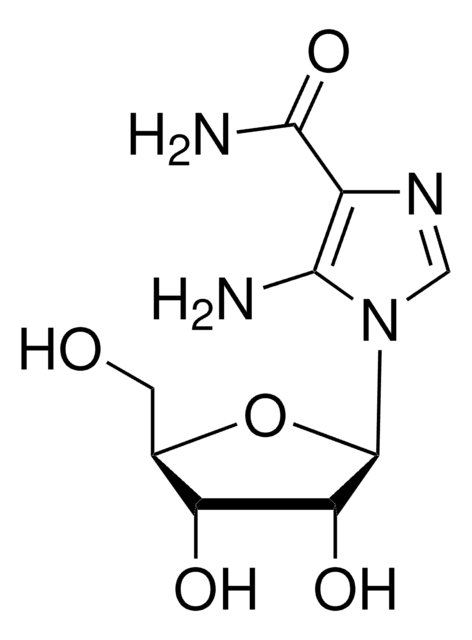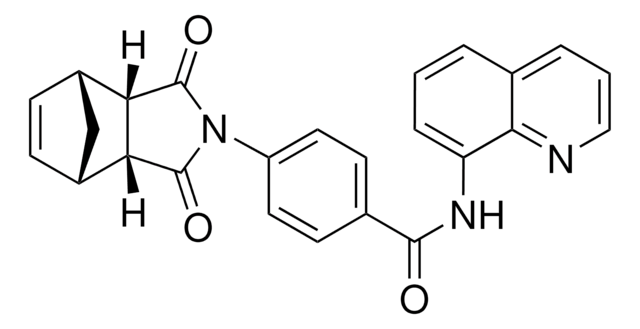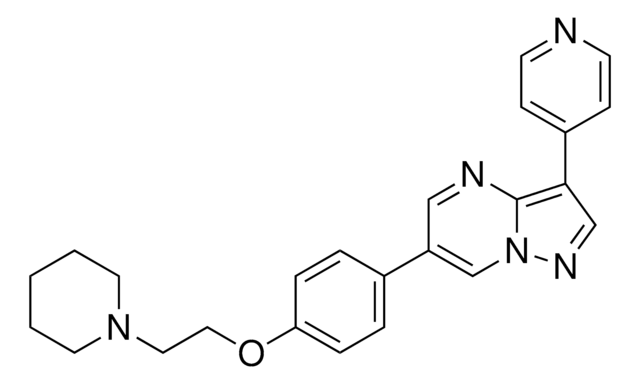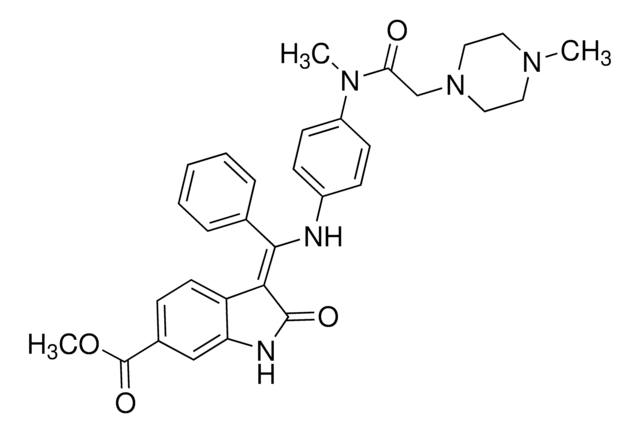SML2404
EC23
≥98% (HPLC)
Sinônimo(s):
4-((5,5,8,8-Tetramethyl-5,6,7,8-tetrahydronaphthalen-2-yl)ethynyl)benzoic acid, 4-[2-(5,6,7,8-Tetrahydro-5,5,8,8-tetramethyl-2-naphthalenyl)ethynyl]benzoic acid, AGN 190205, AGN-190205, AGN190205, BASF 46928, BASF-46928, BASF46928, EC 23, EC-23
About This Item
Produtos recomendados
Ensaio
≥98% (HPLC)
Formulário
powder
cor
white to beige
solubilidade
DMSO: 2 mg/mL, clear
temperatura de armazenamento
2-8°C
InChI
1S/C23H24O2/c1-22(2)13-14-23(3,4)20-15-17(9-12-19(20)22)6-5-16-7-10-18(11-8-16)21(24)25/h7-12,15H,13-14H2,1-4H3,(H,24,25)
chave InChI
OQVLOWLEEHYBJH-UHFFFAOYSA-N
Ações bioquímicas/fisiológicas
Palavra indicadora
Warning
Frases de perigo
Declarações de precaução
Classificações de perigo
Repr. 2
Código de classe de armazenamento
11 - Combustible Solids
Classe de risco de água (WGK)
WGK 3
Ponto de fulgor (°F)
Not applicable
Ponto de fulgor (°C)
Not applicable
Escolha uma das versões mais recentes:
Certificados de análise (COA)
Lamentamos, não temos COA para este produto disponíveis online no momento.
Se precisar de ajuda, entre em contato Atendimento ao cliente
Já possui este produto?
Encontre a documentação dos produtos que você adquiriu recentemente na biblioteca de documentos.
Nossa equipe de cientistas tem experiência em todas as áreas de pesquisa, incluindo Life Sciences, ciência de materiais, síntese química, cromatografia, química analítica e muitas outras.
Entre em contato com a assistência técnica









